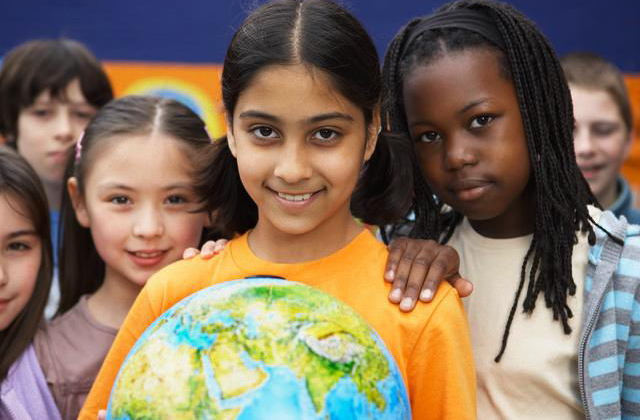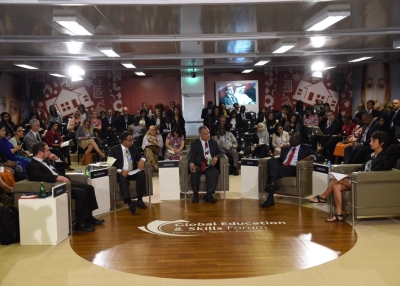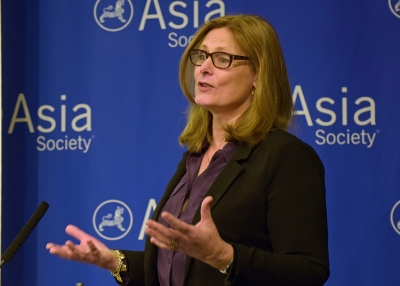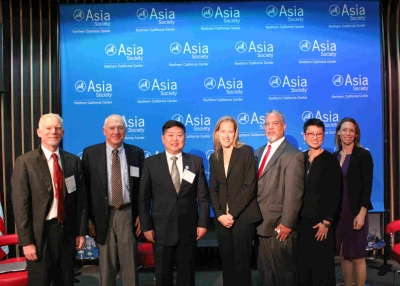Global Interdependence and American Educational Reform

As diverse as America has become, it remains remarkably inward-looking. Without an educational and media establishment that takes on the responsibility of teaching and informing and respecting the riches of foreign cultures, this country could become a paranoid and parochial suburb of a vital global village. — CBS News Correspondent Morley Safer, Co-editor, 60 Minutes
We live in a truly global age…. To solve most of the major problems facing our country today — from wiping out terrorism to minimizing global environmental p roblems to eliminating the scourge of AIDS— will require every young person to learn more about other regions, cultures, and languages. — Former U.S. Secretary of State Colin Powell
Ours is a world of 24-hour news cycles, global markets, and high-speed Internet. We need to look no further than our morning paper to see that our future, and the future of our children, is inextricably linked to the complex challenges of the global community. And for our children to be prepared to take their place in that world and rise to those challenges, they must first understand it. — Former U.S. Secretary of Education Roderick Paige
Our students are trapped in a kind of educational isolationism, which may have suited the Industrial Age but leaves students desperately underprepared for the demands of the 21st-century global economy. Every student will need a solid grounding of knowledge about the history of the U.S. and our vital democratic institutions. But we must also integrate knowledge of world history, geography, science and technology, world languages, literature, and international affairs into the school day. — Former North Carolina Gov. James B. Hunt, Jr.
As the comments above clearly indicate, increasing global interdependence, though a dominant feature of our age, has, until recently, been a neglected aspect of American education reform. What many know intuitively — but have not dared to admit — is that American students’ knowledge of other countries, cultures, and languages has not begun to keep pace with the escalating importance of this knowledge to our nation’s economic prosperity and national security.
While shocking, this situation has some obvious explanations. In the past, for example, complex international transactions were the domain of diplomats and international policy and business experts. Educators were remote from the international agenda. Despite periodic calls for more internationalized content, international education was simply not seen as germane to the needs of most Americans, except in intermittent periods of national crisis.
Today, however, globalization is driving demand for an internationally competent work force. New security challenges require greater proficiency in world languages, and the increasing diversity in our nation’s classrooms and workplaces necessitates a greater understanding of other cultures. Ensuring basic academic skills for all students, the major focus of education reform over the past decade, is certainly fundamental, but looking ahead in a rapidly globalizing world, we must consider what other knowledge and skills will be important to students’ success as workers and citizens in the 21st century. Among these will certainly be international knowledge and skills.
Defining International Education
International education or international studies to refer to the intentional preparation of American students to be contributing citizens, productive workers, and competent leaders in the interconnected world of the 21st century. While definitions vary in the precise language used, international education is generally taken to include:
- knowledge of other world regions, cultures, and global/international issues;
- skills in communicating in languages other than English, working in global or cross-cultural environments, and using information from different sources around the world; and
- values of respect and concern for other cultures and peoples.
We do not see international education as an additional, separate subject, but rather as an emphasis that is integrated into all the major curriculum areas.
Addressing International Education
Through the articles on this website, we bring to the attention of readers critical issues in international education. We and the other contributors will analyze why international knowledge and skills are critical for our nation in the current century.
In the first part of this series, the issues are examined from several different perspectives. First, two former governors, James B. Hunt, Jr., of North Carolina and John Engler of Michigan, discuss the connections between international education, economics, and democracy. Then two educators, Ted Sanders and Vivien Stewart, provide an overview of new developments around the U.S., highlighting approaches to international education that some American schools and states are already taking and exploring what state and national policies are needed to build capacity. Finally, noted communications researcher Susan Bales examines what the general public understands about this issue.
The second part of this series takes stock of how well American education is preparing students for the global age. We present articles on a number of different dimensions of this emerging field. With high school reform capturing increasing attention, Anthony Jackson outlines how a nascent network of international studies high schools aims both to promote 21st-century skills and to graduate more low-income students who are ready for higher education. Myriam Met examines the calls — coming primarily from outside the education system — for new thinking about the scope of foreign language education and synthesizes the research on what would make foreign language instruction more effective. James Kelly argues that teaching about the world must become a required element of teacher preparation and analyzes the systemic issues that need to be addressed. Finally, since students may be learning more about world regions and issues outside the school than inside, articles by Ellen Wartella and Gary Knell and by Linda Roberts discuss ways in which media and information technology can transform the ways in which students learn about other cultures and, indeed, our very notions of the classroom.
As we grapple with ways to promote international education, many questions remain unanswered. In the third part of this special section, we guest editors step back and offer our reflections on how this critically important field — one that lacks textbooks, a codified research base, dependable funding streams, and major professional capacity— can move forward. We suggest that in order for IE to assume its justified role in education, a rethinking of the intent of education in the 21st century is in order. The special section concludes with a guide to organizations and resources that support international education.
Our goal in the articles that follow is to take honest stock of where American schools stand with respect to promoting international knowledge and skills and to share some promising efforts. We make no claim to be inclusive of all the efforts taking hold throughout the U.S., but we do raise some critical issues for consideration. We aim to provoke conversation and to generate interest in what we regard as one of the nation’s truly “high-stakes” issues, perhaps one of the most neglected issues of our time.
Authors: Sharon Lynn Kagan is Virginia and Leonard Marx Professor of Early Childhood and Family Policy, Teachers College, Columbia University, New York, NY, and Vivien Stewart is vice president for education programs, Asia Society, New York, NY.
This article was originally published in Phi Delta Kappan (November 2004). Reprinted with permission.






